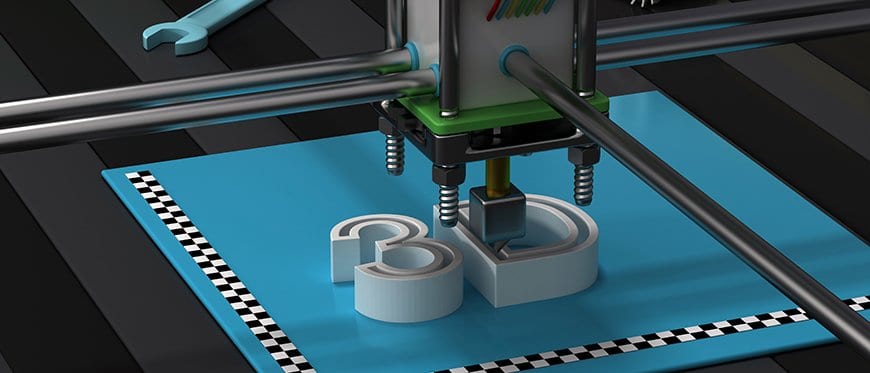The recent excitement around consumer-grade 3D printers may make it seem like there is a hot new tech fad emerging. In fact, 3D printing began in the 1980s, and has been heating up in the manufacturing space for some time. It currently represents a six-billion-dollar industry – one that is set to grow exponentially. The profit motive is not, however, the sole force driving today’s intense interest in 3D printing. Vastly improved flexibility and sustainability have also made manufacturers take notice. It’s no wonder, then, that in 2016 over half a million 3D printers were sold, and it’s estimated that nearly seven million such printers will ship by the year 2020.
Flexibility and individualized solutions
Much of the buzz around 3D printing centers on its ability to free industry from the constraints of mass production: the need for expensive, large scale, long-lead time manufacturing and supply chain logistics. This new technology, whether on the shop room floor or in a retail store, promises the ability to efficiently tailor one-off solutions for an increasingly individualized marketplace.
But it’s not just about creating a custom-fit motorcycle helmet while the customer waits in the showroom – it’s also about improving processes, to save time and money, while also improving products.
For example, the global automaker BMW knew it could speed up production by providing its workers with custom-fit hand tools – but traditional manufacturing methods could only provide tools designed for a generic hand. By turning to 3D printing, BMW was able to quickly, affordably equip workers with tools customized to their hands, enabling faster, more accurate work – and saving 58% of the cost of producing generic tools by traditional means.
Efficiency produces profitability
The 3D printing process – known in industry as additive manufacturing – produces time and cost savings advantages; one study projects that US industry will save nearly $600 billion in manufacturing costs annually by the year 2020. There will also be significant reductions in energy and transportation costs (the latter thanks to manufacture at the point of sale). Add it all up and one begins to see the tremendous upside profit potential that this new level of efficiency and flexibility can provide.
Sustainability is the big bonus
There is a growing trend among many manufacturers to increase sustainability across the organization by creating products via more environmentally conscious practices. Fortunately, many of the ways 3D printing boosts profitability can also dramatically impact sustainability, as it contributes to:
- Reduced waste when product overproduction is eliminated
- Lower CO2 emissions that go along with lower energy use/cost
- Reduced carbon footprints via reduction in product transportation
The very nature of additive manufacturing makes it a more sustainable approach from the outset. Traditional production can be “subtractive,” that is, it starts with more material than is needed for the product. An example would be starting with a sheet of metal and then cutting, stamping and forming it to create an air duct; by the time the product is finished there is a great deal of metal scrap left over. By contrast, 3D printing is “additive,” building products from the bottom up and using only the exact amount of raw materials required.
Where will 3D printing take your business?
Many consider 3D printing to not simply be a new tool in the existing manufacturing toolkit, but a new era, an inflection point in terms of how we create products and do business. One industry analyst recently noted that 3D printing is “about where personal computing was in 1983.” In short, this transformative technology is likely to transform all our business endeavors in ways we can only now imagine.
Where will it take you?
Sources:
EY: 3D Printing: From Prototyping to Production
EHL: 3D Printing: The Future of Sustainability
3D Insider: How 3D Printing Eliminates Waste in Product Design
Business News Daily: 3D Printing in Manufacturing
Environmental Leader: Is 3D Printing the Future of Sustainable Manufacturing?
